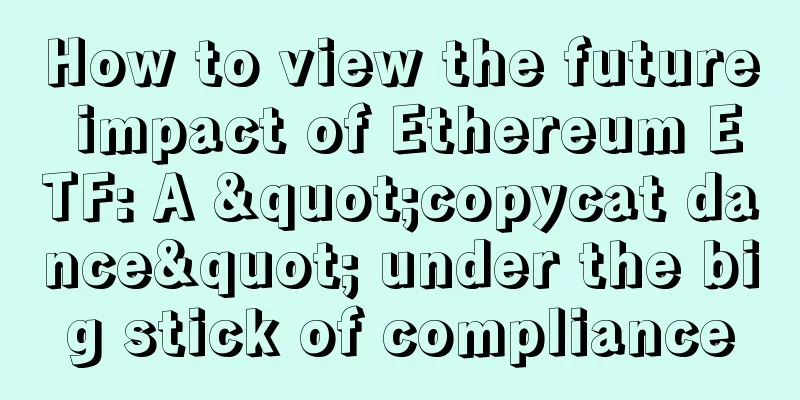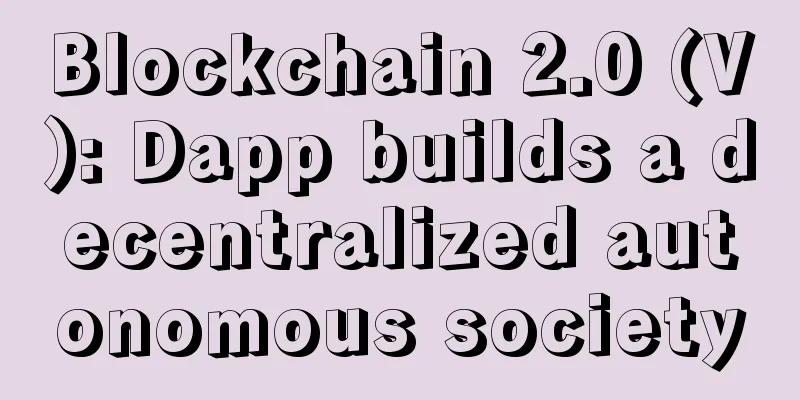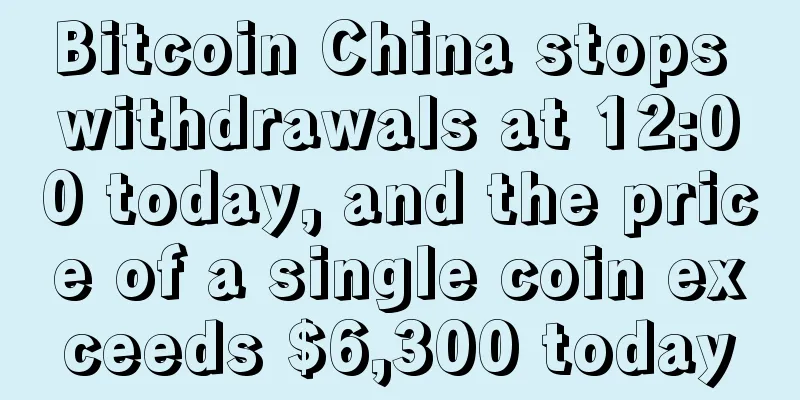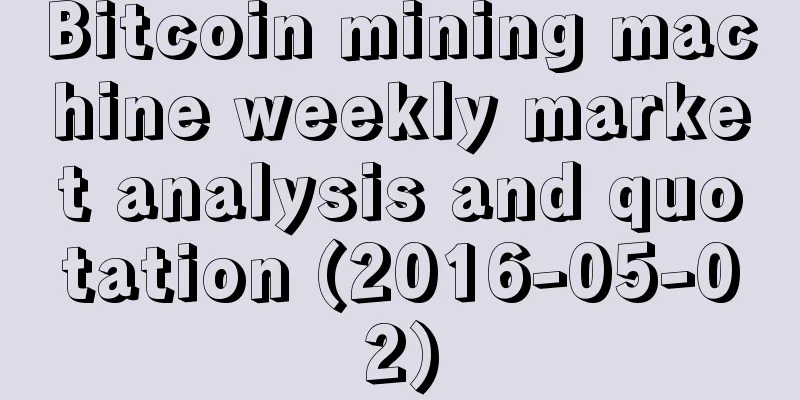How to view the future impact of Ethereum ETF: A "copycat dance" under the big stick of compliance

|
How do you view the changes in the industry after the Ethereum ETF is approved? First, let me talk about the conclusion: In my opinion, the market will usher in a long period of "copycat" season, and the bull run is just right, but the process will not be so beautiful. Why? Next, let me talk about my personal observations: 1. The market reaction after the Bitcoin ETF was approved was not as grand as expected. The violent bull market that everyone expected did not come as expected, but it is obvious that the volatility of Bitcoin has decreased, and the market's ability to bear the pressure is getting stronger. The mysterious power of Wall Street behind it has become a "bottom-line" guarantee for everyone's stabilization of Bitcoin. Because BTC is a pure asset and lacks a complete ecological support behind it, the secondary market expectations of BTC seem to be out of touch with the primary market that everyone is building. In the short term, BTC's "gain" effect on the market cannot be extended to the primary investment market, especially to the mainstream Ethereum's Lego ecological market, the correlation is even weaker. However, the approval of the Ethereum ETF is quite different? On the one hand, ETH deflation will directly affect the activity of the primary market. As the price of Ethereum increases, the advantage of low layer2 Gas will be highlighted, which will indirectly drive the development of the layer2 market. The reduction in the circulation of Ethereum will intensify the involution of the Restaking and AVS interest-bearing tracks and drive value growth. Ethereum is in the hands of incremental funds and is used to invest in and support compliant top DeFi projects, etc. If this example seems far-fetched, you just need to understand that the value of Ethereum today is gradually generated by the huge primary Build market behind it. On the contrary, the asset price and circulation audience of ETH itself will also bring a steady stream of users, funds, and talent resources to the industry ecosystem. This is the fundamental reason why the Ethereum ETF will relatively promote the arrival of the "copycat season". 2. The "copycat" coins mentioned here, I would like to refer to some "mainstream coins" that have VC support, team building, but are not highly valued by the market before the Token is issued, and the coin price is low after the Token is issued and cannot be supported by value. In short, the approval of the Ethereum ETF can attract mainstream funds to flow into the huge ecosystem built by Ethereum, driving the continuous growth of value coins. (Whether the curse of value coins not being as good as MeMe coins can be broken in one fell swoop. However, the ideal is beautiful, but it is not easy to let mainstream funds flow into the ecosystem and drive the entrepreneurial ecosystem of web3. The passage of the "21st Century Financial Innovation and Technology Act" (FIT21) passed by the US House of Representatives contains a lot of information. The bill clearly proposes to provide key consumer protection and promote innovation in the US digital asset ecosystem. A brief interpretation: 1. The U.S. Commodity Futures Trading Commission (CFTC) has greater regulatory power. The regulation of digital virtual assets under the "commodity" attribute will be more flexible and free, which is the basis for the long-term "stability" of the policy end field with fewer variables; 2. "Compliance" will become the main theme of the development of the Crypto digital ecosystem, including the construction of institutional systems such as the process and standard specifications for issuing assets. This means that the virtual asset ecosystem will be divided into two extremes: Those who cater to compliance will gradually find solutions to key issues such as KYC and anti-money laundering, and will directly receive ETF gain buffs. Those who do not cater to compliance will be subject to more severe sanctions and crackdowns, and will gradually return to the niche market (such as Tornado); remember, in 2021, when institutions poured in, we defined the market as the first year of compliance, but the unexpected incidents of FTX and Luna delayed this long-cherished wish. After all, the "compliance" issue must be faced when ETFs are passed. 3. The U.S. government or chaebols will strongly "interfere" in key areas such as stablecoins, exchanges, digital asset custodians, and payment platforms. The probability of directly making stablecoins in the short term is low, but it cannot be ruled out that they will indirectly control the market behind the scenes through issuing licenses. 3. If the above assumptions are true, we can foresee: In the short term, the secondary market of Crypto will be polarized. Some behind-the-scenes dealers will intensify speculation before a series of regulatory bills are introduced. MeMe coins and some mainstream coins will have high volatility, and copycats will be rampant. In the medium term, some leading DeFi, stablecoins, and exchanges will increase their compliance efforts. Value targets with good compliance orientation will have good market performance, while those with poor compliance orientation will gradually lose value support. In the long run, the political color of Crypto will drive the encryption market to cater to the taste preferences of the web2 market little by little, which may disappoint some fundamentalists who adhere to a high degree of decentralization. However, expecting policies to bring benefits and being crushed by policies are a double-edged sword. Web3 native is not a protective umbrella for money laundering in the name of decentralization. Under the big stick of compliance, the community is divided, and product stratification is the general trend. Some of the very complex technologies and protocols of Crypto are difficult to control by supervision, but the market will only stand in the most mainstream development route. (The choice is actually in the market. In short, it may be the last carnival of speculators, or a little bit of pressure from the sword of regulation, or the loss of speculative people after high volatility is restrained, etc. Everyone has their own vision for the development of Crypto. Overall, the Crypto market under political guidance will no longer maintain the original dream of pure "decentralization", but it can allow the Crypto market, which has been developing in a mixed order for many years, to eliminate the dross and make it possible for mainstream value coins to shine. |
>>: The market digests the positive news of ETFs, and $3,800 may be the key position for ETH
Recommend
Bitwise: Why is the market reacting wrong? What is the only important question in Bitcoin?
What really matters about strategic bitcoin reser...
If there are horizontal wrinkles in the philtrum, the person will have no wealth.
A person's appearance features often contain ...
What kind of people are easily deceived?
What kind of people are easily deceived? Cheating...
Wrinkled forehead
The forehead is called the forehead in physiognom...
Bitcoin blockchain technology will launch a real revolution
Bitcoin 's blockchain technology has launched...
The wisdom line forks downward in the middle
Is it good for the wisdom line to fork downward i...
What is a full sky?
I believe many people have heard this saying: a f...
The latest interpretation by Mu Changchun from the Digital Research Institute of the Central Bank: Will the “controllable anonymity” of the digital RMB violate privacy?
The digital RMB is a legal tender in digital form...
Bitcoin pats you on the back. You should master these knowledge points before the bull market.
Written in front: It has been two months since Bi...
Are low-market-cap altcoins worth investing in?
There are about 18,500 cryptocurrencies listed on...
Monero: You have mining machines and money, can't I just change the algorithm?
Recently, the developers of Monero announced that...
Your fingers predict your future luck
The length of ten fingers affects a person's ...
What facial wrinkles tell you about your career prospects
Everyone will have some wrinkles on their face as...
What does it mean if there is no life line in palmistry?
If there is no lifeline on the palm of your hand,...
World Economic Forum: Hello blockchain, goodbye traffic jams
Traffic congestion is a common problem in all cit...









